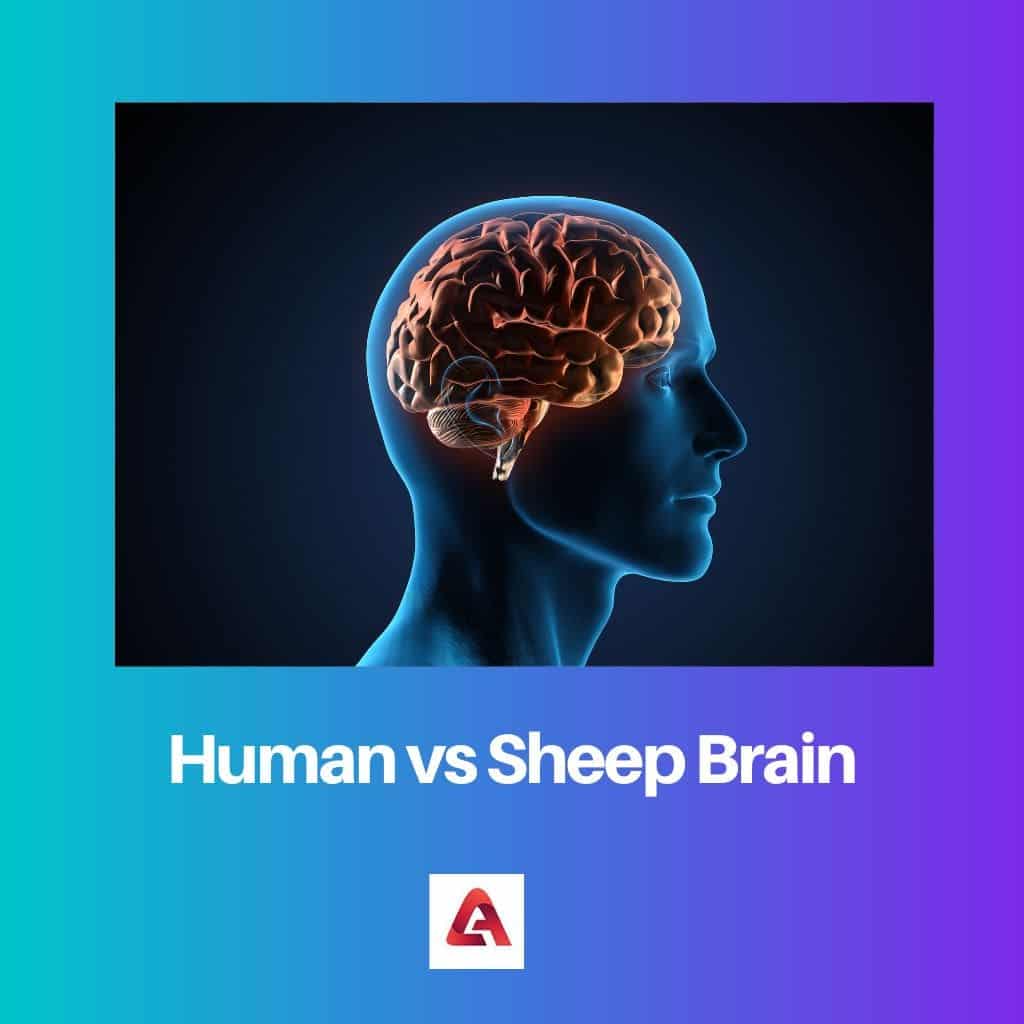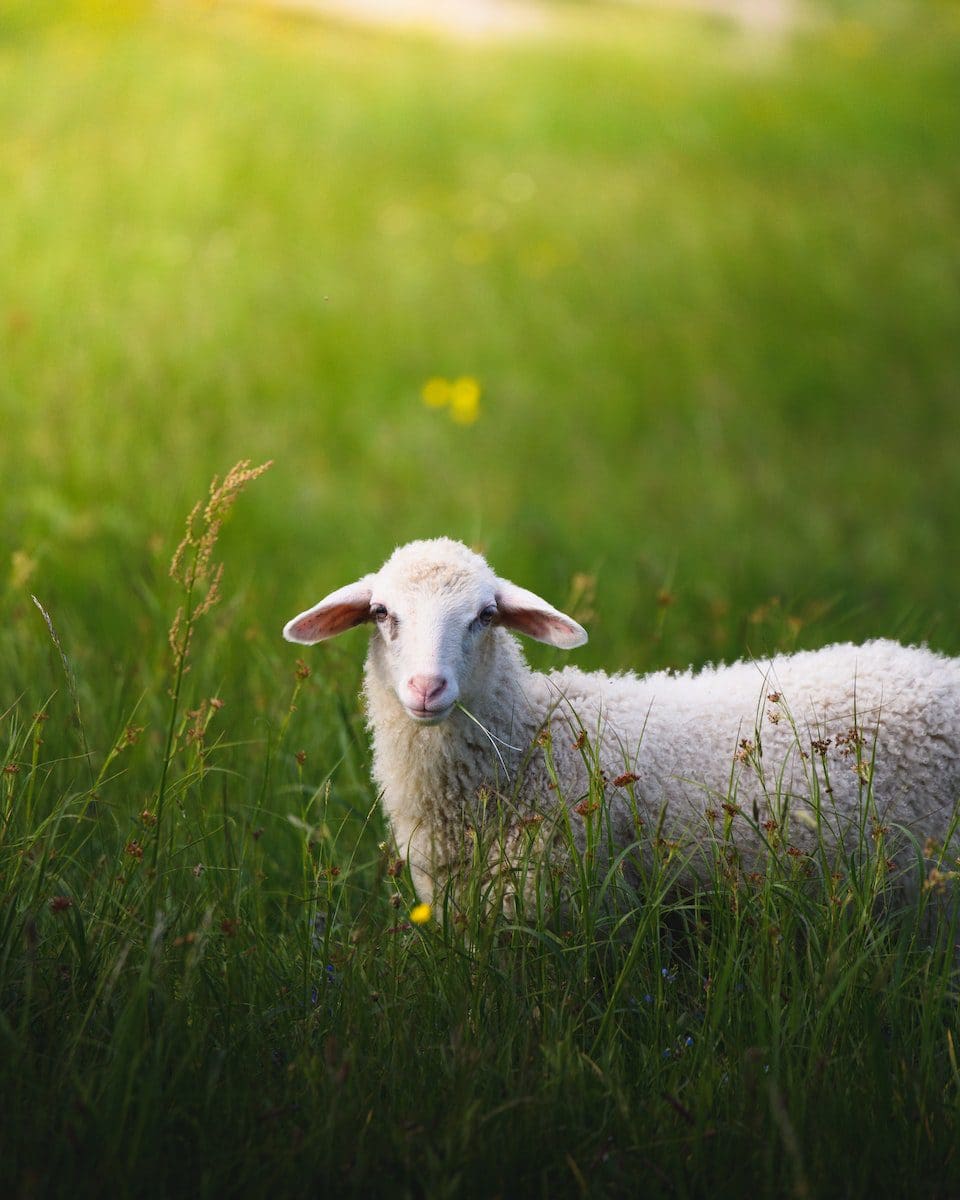Human brains have a larger cerebral cortex, enabling higher cognitive functions such as reasoning and language comprehension, whereas sheep brains have a more pronounced olfactory bulb, enhancing their sense of smell and associative memory.
Key Takeaways
- The human brain is larger and more complex than the sheep brain, with greater cognitive abilities and a larger cerebral cortex.
- The sheep brain is used as a model for studying neurological disorders, as it shares many similarities with the human brain.
- While human and sheep brains share many similarities in structure and function, the human brain is considered more advanced and complex.
Human vs. Sheep Brain
Human Brain is larger and weighs around 1300 to 1400 grams. It has a vertical spine, so the cerebellum and brainstem are below the cerebrum. A sheep’s brain is small in size and has a horizontal spine. They have a good sense of smell due to a more developed olfactory lobe.

The human brain is 15 centimeters long, and a sheep’s brain is only about a third of that length. Both have three divisions: the cerebrum, cerebellum, and brainstem.
The cerebellum and brain stem are located behind the cerebrum in sheep, as they have a horizontal spine. At the same time, they are located below the cerebrum in humans as they have vertical spines and are upright.
Comparison Table
| Feature | Human Brain | Sheep Brain |
|---|---|---|
| Size | 1,300 – 1,400 grams | 130 – 150 grams |
| Weight to Body Ratio | 2% | 0.1% |
| Cerebral Cortex | Highly developed, with complex folds (gyri) and sulci | Less developed, with fewer folds |
| Neocortex | Largest part of the brain, responsible for higher-order functions like language, complex thought, planning, and problem-solving | Smaller, with less emphasis on these functions |
| Limbic System | Involved in emotions, memory, and learning | Present, but less developed |
| Cerebellum | Involved in motor control and coordination | Similar in size proportionally, but with less complexity |
| Olfactory Bulb | Smaller due to less reliance on smell | Larger, reflecting greater importance of smell in sheep behavior |
| Brain-to-Body Ratio | Much larger, indicating greater cognitive capacity | Smaller, reflecting a simpler nervous system |
What is the Human Brain?
The human brain is the central organ of the nervous system and the seat of human consciousness, cognition, and behavior. It is an intricate and complex structure composed of billions of neurons, glial cells, and supporting structures that enable various functions essential for human life.
Anatomy and Structure
- Cerebrum: The largest part of the human brain, the cerebrum, is divided into two hemispheres (left and right) and is responsible for higher-order functions such as thinking, reasoning, and voluntary movement. It consists of four lobes: frontal, parietal, temporal, and occipital lobes, each associated with specific functions.
- Cerebellum: Situated beneath the cerebrum, the cerebellum coordinates voluntary movements, balance, and posture. Despite its smaller size compared to the cerebrum, it contains a vast number of neurons and plays a crucial role in motor control and learning.
- Brainstem: Connecting the brain to the spinal cord, the brainstem regulates basic life functions such as breathing, heart rate, and sleep-wake cycles. It consists of the midbrain, pons, and medulla oblongata, which serve as relay centers for sensory and motor pathways.
- Basal Ganglia: Deep within the cerebral hemispheres, the basal ganglia are involved in motor control, procedural learning, and emotions. Dysfunction of these structures can lead to movement disorders such as Parkinson’s disease.
- Limbic System: Situated within the cerebrum, the limbic system comprises structures like the amygdala and hippocampus, playing roles in emotion, memory, and motivation.
Functions
- Cognition: The human brain enables complex cognitive processes such as thinking, memory, attention, perception, and problem-solving, allowing individuals to interact with their environment and adapt to changing circumstances.
- Emotion and Behavior: The limbic system and other brain regions regulate emotions, influencing mood, motivation, and social interactions. Additionally, the prefrontal cortex plays a critical role in decision-making and impulse control.
- Sensory Processing: Various regions of the brain, including the occipital, parietal, temporal, and frontal lobes, process sensory information from the environment, allowing humans to perceive and interpret visual, auditory, tactile, olfactory, and gustatory stimuli.
- Motor Control: Through intricate neural circuits involving the cerebellum, basal ganglia, and motor cortex, the human brain coordinates voluntary movements, ranging from simple actions like walking to complex tasks like playing a musical instrument.
Plasticity and Adaptabilit
The human brain exhibits remarkable plasticity, allowing it to reorganize its structure and function in response to experiences, learning, and injuries. Neuroplasticity enables individuals to acquire new skills, recover from brain damage, and adapt to changing circumstances throughout life. This dynamic feature underscores the brain’s capacity for growth and development, making it one of the most fascinating and versatile organs in the human body.

What is the Sheep Brain?
The sheep brain, like that of other mammals, is a complex organ responsible for various physiological and behavioral functions. While structurally similar to the human brain in many respects, there are notable differences in size, organization, and specialization.
Anatomy and Structure
- Cerebrum: The sheep brain’s cerebrum, similar to humans, is the largest part of the brain and is divided into two hemispheres. It houses regions responsible for sensory processing, motor control, and higher cognitive functions, albeit with differences in size and complexity compared to humans.
- Olfactory Bulb: One distinctive feature of the sheep brain is the relatively large olfactory bulb, reflecting the importance of the sense of smell in sheep behavior. This structure is involved in processing olfactory information, aiding sheep in identifying food, detecting predators, and social communication.
- Brainstem: As in humans, the brainstem in sheep connects the brain to the spinal cord and regulates essential functions such as breathing, heart rate, and basic motor reflexes. It comprises the midbrain, pons, and medulla oblongata, facilitating communication between the brain and the rest of the body.
- Cerebellum: The cerebellum in sheep, while smaller compared to the cerebrum, plays a crucial role in coordinating movement, balance, and posture. It receives sensory input from the body and integrates it with motor commands to ensure smooth and coordinated movement.
Functions
- Sensory Processing: Sheep rely heavily on their senses, particularly their acute sense of smell, to navigate their environment and interact with conspecifics. The large olfactory bulb and associated brain regions enable sheep to detect and discriminate various odors, influencing feeding, mating, and social behaviors.
- Motor Control: The sheep brain, particularly the cerebellum and motor cortex, coordinates voluntary movements and maintains balance and posture. This is essential for activities such as grazing, walking, and escaping predators.
- Instinctual Behaviors: While sheep demonstrate some degree of learning and problem-solving abilities, much of their behavior is driven by instinctual responses shaped by evolution. The brain’s structures involved in innate behaviors, such as fear responses and social interactions, are vital for survival in their natural habitat.
- Associative Memory: Sheep exhibit a degree of associative memory, allowing them to learn and remember relationships between stimuli and outcomes. This ability aids in tasks such as recognizing familiar individuals, navigating familiar landscapes, and recalling locations of food and water sources.
Adaptability and Evolution
Sheep brains, like those of other animals, have evolved to suit the specific ecological niche and behavioral repertoire of the species. While lacking the complexity and cognitive abilities of the human brain, the sheep brain’s specialization in sensory processing, motor coordination, and instinctual behaviors reflects its adaptation to the challenges of survival in a herbivorous, group-living species.

Main Differences Between a Human and a Sheep Brain
- Size and Complexity:
- Human brains are larger and more complex than sheep brains, particularly in the cerebral cortex, which is responsible for higher cognitive functions.
- Sheep brains have a relatively larger olfactory bulb, reflecting the importance of the sense of smell in their behavior.
- Cognitive Abilities:
- Human brains exhibit advanced cognitive abilities such as language, abstract thinking, and problem-solving, facilitated by a highly developed cerebral cortex.
- Sheep brains prioritize instinctual behaviors and sensory processing, with less emphasis on complex cognitive functions.
- Specialization:
- Human brains have specialized areas for language processing, motor control, and executive functions, reflecting the complexity of human behavior and cognition.
- Sheep brains are specialized for sensory processing, particularly in the olfactory system, which is crucial for detecting predators, finding food, and social communication.
- Plasticity and Adaptability:
- Human brains demonstrate high levels of neuroplasticity, allowing for learning, memory formation, and adaptation to diverse environments and experiences throughout life.
- While capable of learning and memory, sheep brains show less plasticity and adaptability compared to humans, with behavior largely driven by instinctual responses shaped by evolutionary pressures.




